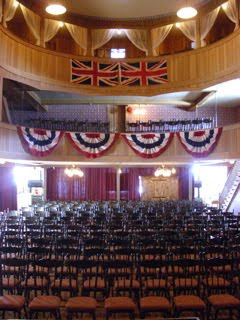


The last stern-wheeler to run on the Yukon River.
In 1960 the SS Keno sailed from Whitehorse to her final resting place on the riverbank in Dawson. Maybe I was hasty to say the Palace Grand is the most lovely building in Dawson because of course there is the Commissioner's Residence (Martha Black's one-time home) and the simple, beautiful Keno.
J. and I tried to arrange a private tour through the Keno while I was in Dawson last week but...well, next time.
During their heyday there were some 350 stern-wheelers on Northern rivers, hauling supplies, equipment, ore and passengers. They were introduced to the Yukon River in 1866. The structure and design is patterned after the stately Missouri Riverboats, with flat hulls for speed and "hog posts" on the upper decks to prevent twisting and to haul the ships over shallow points in the river. Because they were often lost on snags, rocks, sandbars, ice floes and rapids, they had to be economically constructed of Douglas Fir, cedar and pine.
The only other surviving stern-wheeler in the Yukon is the SS Klondike which sits on the banks of the Yukon River near the Robert Campbell bridge in Whitehorse. It was built in 1929 by the
British Yukon Navigation Company and was the largest of all 350 stern-wheelers with 50% more cargo space. She was retired in 1955.
And the origins of ships (and countries and oceans) taking the female referent (even ships named after men)? In modern English the use of the pronoun 'she' in reference to inanimate objects is an optional figure of speech, but this is in decline. In March 2002, the British newspaper Lloyd's List announced it would start referring to all naval vessels as 'it'.
And J. tells me that a 1960's list of why boats are 'shes' includes 'needing a strong hand' and 'a master's guidance'. Well, I suppose so, if one intends to be carried over the sea!




































